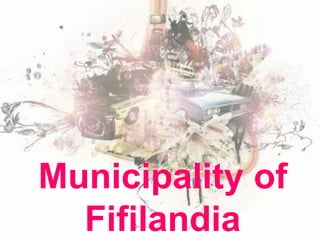
Marikina City
- 1. Municipality of Fifilandia
- 3. Mandaluyong Quezon City City Makati Marikina City LOCATION City Pasig City
- 4. Marikina City • Marikina was former capital of the province of Manila during the declaration of Philippine Independence. • Marikina was given the title the Shoe Capital of the Philippines because of its notable shoe industry. • World's Largest Pair of Shoes and it was only recently that the Guinness World Records recognized this feat.
- 5. Marikina City • The Shoe Museum houses part of the famous shoe collection of the former First Lady Imelda Marcos, shoes of the world leaders, past presidents, famous people, and shoes of different countries around the world, and making it the largest collection of pair of shoes in the world.
- 6. Marikina City • Marikina is noted as one of tourism and cultural hub in Metro Manila, it is also the home of Philippine Footwear Federation. Marikina is one of the wealthiest local government units in the Philippines.
- 7. Marikina City • The city also considered as one of the healthiest and livable cities within the Asia-Pacific, awarded Hall of Fame for its cleanest and greenest city, most awarded city in Metro Manila and most competitive city in the Philippines. The people of Marikina are amongst the most disciplined in the Philippines.
- 8. Marikina City •Districts: 1st and 2nd district of Marikina. •Barangay: 16 Barangays •Incorporated (town): April 16, 1630
- 9. Government • Mayor: Del R. De Guzman(Liberal) • V. Mayor: Jose Fabian I. Cadiz (Liberal)
- 11. Demographics •Area: 21.50 km2 (8.30 sq mi) •Population (2010): 424,150
- 12. History • In 1570, the Augustinians were the first to arrive at the valley at the spot now known as Chorillo, in Barangka. • The Jesuits next came to arrive in a place called Jesús de la Peña and they established a mission and built a chapel in a place now called Jesús Dela Peña, where the first mass was held in 1630.
- 13. History • The area was later called "Mariquina" after it named to Felix Berenguer de Marquina in 1787 who was the governor-general at that time, and the town was declared a pueblo under the Spanish colonial government. That year, Don Benito Mendoza became the first Gobernadorcillo of Mariquina. • In 1887, Mariquina emerged as a town of shoemakers. Shoe-making began through the pioneering efforts of Don Laureano "Kapitan Moy" Guevarra (known as the father of shoe industry in the Philippines), assisted by Tiburcio Eustaquio, Ambrocio Sta. Ines, and Gervacio Carlos.
- 14. History • In 1896, Andrés Bonifacio arrived in Mariquina before he and his Katipuneros proceeded to the caves of Montalban. Mariquina became the capital of the Province of Manila in 1898, when the Philippine Revolution broke out, a period which declare the Philippine Independence by Emilio Aguinaldo, the first Philippine president. Don Vicente Gomez became the first Alcalde Presidente of Mariquina in 1900.
- 15. History • In 1992, under the leadership of former mayor Bayani Fernando, Marikina has since been transformed into the beautiful and industrialized urban muicipality. Marikina River transform into beautiful waterways along the beautiful parks on the riverbanks. On December 8, 1996, the municipality of Marikina became a city and transformed rapidly into a highly urbanized. Marikina City classified into first class city by virtue of Republic Act No. 8223, same date as the Feast of Immaculate Concepcion.
- 17. Marikina Park
- 19. Marikina River
- 21. Marikina River
- 23. Marikina City Hall
- 25. Our Lady of the Abandoned Church
- 27. SM Marikina
- 29. End
